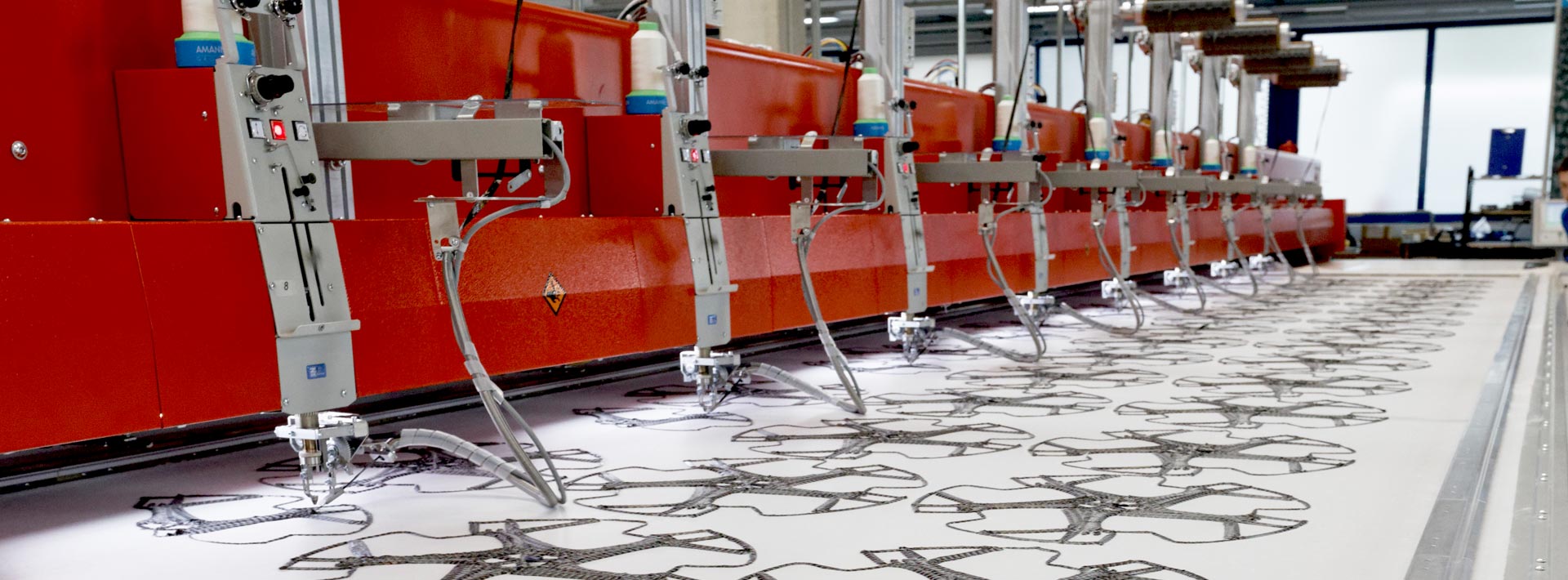Composites introduction
Section outline
-
Introduction to Embroidery of Composite PreformsEmbroidery of composite preforms is a rapidly growing field, particularly driven by the trends of lightweighting in electric and autonomous vehicles within the automotive industry. Techniques such as Tailored Fiber Placement (TFP) enable fibers to be placed in net preform shapes, which simplifies construction and lowers costs. In this introductory course, we will explore the benefits of TFP and examine some of the strategies used to optimize these components effectively.
The Role of Carbon Fiber in Modern CompositesDespite the recent decrease in the cost of carbon fiber, it remains an expensive and highly sought-after material due to its exceptional properties. Carbon fiber composites are renowned for their high strength-to-weight ratio, making them ideal for the next generation of fuel-efficient transportation solutions. Reducing the weight of vehicles, aircraft, or spacecraft can significantly improve fuel efficiency over their operational lifetime. Consequently, carbon fiber is increasingly being considered as a replacement for aluminum in certain structural applications due to the substantial weight savings it offers. However, the high initial material costs of carbon fiber composites can deter potential adopters.
Challenges in Traditional Carbon Fiber ManufacturingThe manufacturing of traditional carbon fiber composites has historically required more processing involvement compared to metals like aluminum. Traditional processes often involve steps such as CAD tracing of woven carbon fiber fabrics, cutting them to scale, wetting them with matrix materials, and curing them into shape using methods like resin transfer molding (RTM). These processes tend to be labor-intensive and lack the automation found in competing metal processes such as milling or sheet metal bending.
Advantages of Tailored Fiber PlacementTailored Fiber Placement (TFP) offers a material and process-efficient method for creating new carbon fiber composite parts, significantly reducing costs. TFP reduces waste by optimizing the use of carbon fiber material, thereby lowering material costs. This technique allows for the integration of other fibrous materials in specific locations, tailoring fibers to specific loading conditions, and achieving variable thickness throughout the parts. Moreover, TFP can easily incorporate new classes of fibrous technical materials. The versatility of TFP machines, which require minimal retooling to produce vastly different parts from batch to batch, enhances the manufacturing process's adaptability. The optimizations provided by TFP can make carbon fiber composites increasingly cost-competitive.

SummaryIn summary, the embroidery of composite preforms, particularly through Tailored Fiber Placement, represents a significant advancement in the manufacturing of lightweight, high-performance components. By reducing material waste, increasing manufacturing flexibility, and enabling the integration of varied materials, TFP addresses some of the key challenges associated with traditional carbon fiber composite manufacturing. As the demand for fuel-efficient and lightweight vehicles continues to grow, the application of TFP in composite preform production will likely expand, offering a cost-effective alternative to traditional methods.
Further Reading & Resources- Composites World - Industry news and insights on composite materials.
- ZSK Technical Embroidery - Detailed information on Tailored Fiber Placement.
- JEC Composites - A platform dedicated to the composite materials industry.
